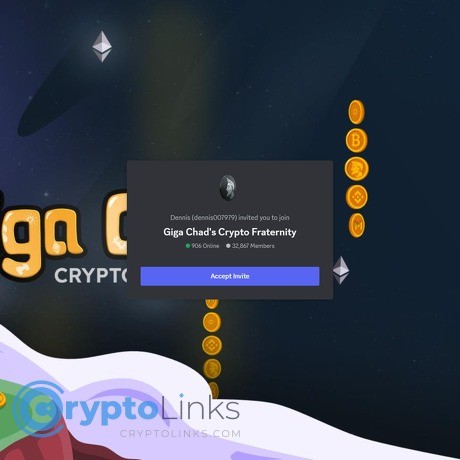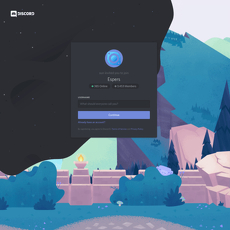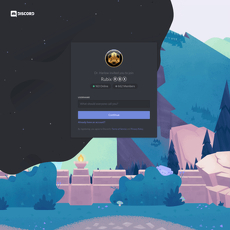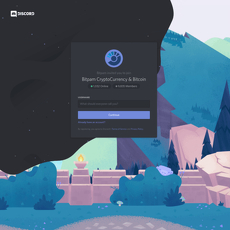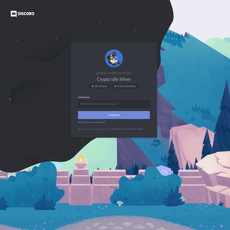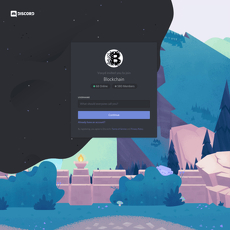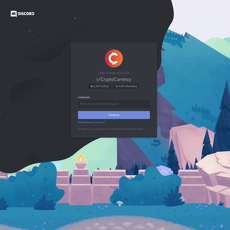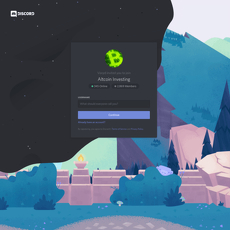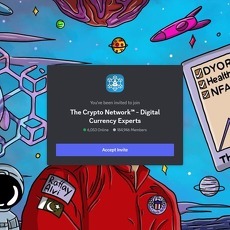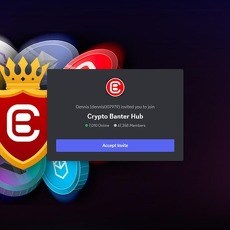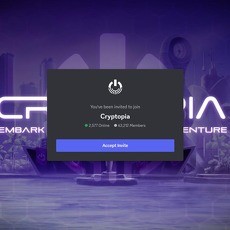Giga Chad's Crypto Fraternity Review
Giga Chad's Crypto Fraternity
discordapp.com
Giga Chad’s Crypto Fraternity Discord Review Guide: Everything You Need To Know (FAQ Inside)
Thinking about joining Giga Chad’s Crypto Fraternity on Discord but not sure if the “alpha” is real or just more noise? Wondering if it’s the kind of community that actually helps you sharpen your edge instead of wasting your time?
I wrote this to help you decide fast, without trial-and-error. No hype. Just what matters: how the server is built, how it’s moderated, the quality of research, and whether the culture respects risk as much as it loves big wins.
Why most crypto Discords feel broken
If you’ve tried a few, you’ve probably lived this:
- Low-effort calls buried in memes: You open “alpha” channels and find vague takes with no entries, no exits, and no follow-up. Two days later, the message is buried under 600 gifs.
- Paywalls hiding thin content: The “VIP” tier gives you the same lines as public chat—just faster. No thesis, no post-mortems, no tracking.
- Terrible signal-to-noise: Strong ideas get drowned out by FOMO and ticker spam. Research drops at random, and there’s no archive you can check.
- DM scammers: New members get hit with “insider” tips, fake screenshots, and shady links. One click can compromise your wallet.
It’s not just annoying—it’s expensive. Behavioral studies consistently show that noisy environments push people toward impulsive, lower-quality decisions. In markets, that’s amplified. Traders who act on unverified signals tend to overtrade and underperform (see the well-known Barber & Odean “Trading Is Hazardous to Your Wealth” findings on overconfidence and churn). Combine that with FOMO—a documented driver of risk-taking—and you get a recipe for bad outcomes.
Rule #1: If a “call” isn’t timestamped, tracked, and revisited, it’s not a call—it’s a comment.
So, if you’re about to join a crypto Discord, what should you expect to see before you trust a single idea?
What I’m promising to solve for you
I ran Giga Chad’s Crypto Fraternity through the same process I use when I evaluate any crypto server:
- Thesis-first calls: Clear reasoning, not just tickers and arrows. I look for invalidation points and position sizing talk.
- Receipts: Timestamped posts, archives, and post-mortems you can actually audit later.
- Mod discipline: Fast takedowns of DM spam, zero tolerance for scammers, and an actual escalation path.
- Real education: Guides, frameworks, and tooling so you can replicate thinking—not just copy trades.
If those boxes aren’t ticked, the “alpha” isn’t worth much. With Giga Chad’s server, I focused on whether the brand’s confident tone matches a process you can trust.
What I’ll cover (quick glance)
Here’s what I’ll walk you through so you can make a call without wasting weeks:
- Channels and features: What’s inside, how it’s organized, and whether the structure helps you learn fast.
- Research quality: Are calls backed by real theses, entries/exits, and follow-ups you can track?
- Win-rate transparency: Is there a ledger or archive to verify performance—not just cherry-picked screenshots?
- Community vibe: Is the tone helpful and ambitious, or just loud? Are strong voices active across time zones?
- Security and moderation: How safe are you from DM scammers and fake accounts?
- Pricing and value: If there’s a paid tier, what do you actually unlock—and is it worth it?
- Who it’s best for: New traders, mid-level strategists, or degens? Different users need different structures.
- Alternatives: What to compare it against so you pick the best fit for your style.
- Quick-start checklist: If you do join, how to get value in 48 hours without getting wrecked.
Before we jump inside, there’s one thing the name sets up that you should understand. Ever wondered what “Giga Chad” actually means in crypto—and why that branding matters for the culture you’re about to walk into?
What “Giga Chad” means in crypto—and why the name matters here
Definition in crypto slang
In crypto, a GigaChad isn’t just loud on the timeline. It’s shorthand for someone who makes strong, repeatable decisions, sticks to a plan when the market swings, and doesn’t confuse luck with skill. Think conviction with receipts—not bravado.
“Confidence without receipts is just charisma.”
That difference matters. Behavioral finance keeps proving that raw confidence alone is a losing edge. Overconfident traders tend to overtrade and underperform, a pattern documented in Barber and Odean’s landmark study, “Trading Is Hazardous to Your Wealth” (SSRN). The pros separate conviction from compulsion with clear theses, position sizing, and pre-defined exits.
How that frames the server’s identity
When a server calls itself “Giga Chad’s Crypto Fraternity,” it sets a high bar. The name promises a culture that:
- Calls shots with a thesis — not just “X will pump.” You expect a why: catalysts, catalysts that expire, and what would invalidate the idea.
- Shows the process — entries, exits, risk per trade, time horizon, and a plan for scaling in/out.
- Owns the results — wins and losses both. Hindsight bias is a killer; transparent logs help fight it (see Roese & Vohs on hindsight bias, Perspectives on Psychological Science).
- Stays steady under pressure — conviction doesn’t mean doubling down on losers. It means respecting invalidation and living to fight the next setup (prospect theory reminds us how loss aversion warps decisions: Kahneman & Tversky).
What does a real “GigaChad” moment look like in practice? Picture a sharp 20% Bitcoin shakeout. The move isn’t to revenge long at market. It’s to follow the plan you wrote before emotions kicked in:
- Thesis: Forced liquidations cascade into a liquidity pocket near a known level; mean reversion likely if open interest resets.
- Plan: Scale bids in a defined range, invalidate below a key weekly level, risk 1–1.5% of account, partials at pre-set targets.
- Signals watched: OI flush, funding normalization, spot-led bounce, and breadth stabilizing.
- Follow-up: If invalidated, stop. If filled, post real-time updates and a short post-mortem after.
That’s the identity the name hints at: bold, yes—but built on structure. It resists herding and echo chambers (classic social-proof traps described by Bikhchandani, Hirshleifer, and Welch, The Journal of Political Economy) by grounding calls in repeatable frameworks.
Meme energy vs. real substance
Crypto loves memes. I’m all for fun branding, as long as it comes with accountability. The name promises swagger; the server earns it with process. Here’s what I look for to confirm it’s not just a vibe:
- Timestamped calls — threads that start before the move, not victory laps after.
- Complete trade plan — thesis, entry range, invalidation, targets, time horizon, position size. No “trust me bro.”
- Clear risk language — “risk 0.5–1.5%,” not “all in.” Overconfidence leads to excess turnover and worse outcomes (again, Barber & Odean).
- Evidence links — on-chain dashboards, order flow snapshots, DEX liquidity maps, or macro charts backing the idea.
- Post-mortems — brief, honest summaries after trades. What worked, what didn’t, what changes next time.
- No cherry-picking — losses documented alongside wins, with a running ledger or archive that’s easy to audit.
- Anti-hype moderation — memes welcome; low-effort shills and “ape now” spam aren’t.
Here’s a simple call format I expect to see if the “GigaChad” name is real:
- Asset: SOL/USDT
- Thesis: Catalyst window: upcoming unlock + L2 ecosystem flows; funding negative, perp open interest high into support.
- Plan: Entry 1: 141–143; Entry 2: 137–138; Invalidation: 134 (4H close); Targets: 152 / 158; Time horizon: 3–7 days
- Risk: 1% of account, scale 60/40 across entries; no add if invalidated.
- Receipts: Screenshots/links to order flow, funding, and unlock schedule; follow-up thread linked in the original post.
That’s the difference between meme energy and market edge. A strong name sets the tone; systems prove it out. And yes, I’ll always weigh the swagger against practical signals like how often calls include invalidations, how quickly mistakes are admitted, and whether mods suppress hindsight bias by pinning pre-move posts.
So does the inside actually match the name—channels built for process, tools that back up theses, and an onboarding flow that respects your time? Let’s check what’s behind the front door next.
Inside the server: channels, features, and member experience
Onboarding flow and rules
First impressions set the tone. Here, the entry path is clean: a short rules screen, a one-click verification, and you’re in. No labyrinth of roles to pick, no endless emoji quizzes. The rules are short and blunt—no financial advice, no unsolicited DMs, don’t post links you wouldn’t click yourself—and the “read-this-first” post is pinned at the top of the welcome channel.
- Green flags I saw:
- One-tap verification that keeps bots out without making you jump through hoops.
- Immediate safety reminder to disable “Allow DMs from server members.” Social engineering is still the #1 attack vector in crypto communities (as repeated in Chainalysis’ annual crime reports), so that nudge matters.
- Clear reporting flow: a pinned post showing exactly how to flag a scammer and what screenshots to include.
- Fast reaction to spam: during my testing window, a fake airdrop link got nuked quickly and the user was removed.
“Trust is a feature, not a perk. If a server can’t keep you safe at the door, it won’t keep you safe in the market.”
Small detail, big lift: rules are written like a checklist, not a contract. It respects your time and keeps new members from making avoidable mistakes.
Research and “alpha” channels
This is where most servers either shine or fall apart. The structure here leans thesis-first and organized, not just ticker spam.
- Core research flow:
- #market-brief for daily context (macro events, funding, OI shifts, liquidity pockets).
- #setups-spot and #setups-perps for entries/exits with invalidation and targets.
- #onchain-ideas for wallet flows, token unlocks, and narrative rotations.
- #degens-corner for microcaps with risk notes and size guidance.
- #postmortems for wins/losses breakdowns and what’s learned.
- Thread-per-trade method: each idea gets its own thread. Pinned updates show adds, trims, invalidation moves, and final outcome. That means you can audit the life of a call without hunting across channels.
What good looks like (and what I actually saw used):
- Example call format
- Pair: SOLUSDT
- Timeframe: 4h
- Entry: 128–132 (ladder 25/25/50)
- Invalidation: 4h close below 121
- Targets: 142 / 151 / 162
- R:R: ~1.5R at TP2, ~3R at TP3
- Thesis: 200MA reclaim + funding reset + OI flush into level; confluence with weekly VWAP
- Update: TP1 hit; stop to entry; tracking thread for further notes
That last line—updates—is where most groups fail. A call without a follow-up is just a screenshot farm. Here, follow-ups are normal, not rare, and the archive is searchable by ticker and timeframe, which makes auditing past calls practical rather than painful.
“Speed might win an entry; process wins a career.”
Education and tooling
Good servers teach you how to think so you stop copying and start compounding. The educational stack here is built for that:
- Guides and playbooks:
- Risk 101 with a position-size calculator and examples for 0.5% and 1% risk models.
- On-chain scanning basics (labels, entity tracking, token unlock schedules, bridge flows).
- Setups library with chart examples (reclaims, SFPs, range trades, narrative rotations).
- Tooling:
- Macro calendar bot that posts CPI/FOMC/Jobs data times with local time conversion.
- Funding and OI pings at key extremes to avoid entering at the worst moment.
- On-chain dashboards (public links) for stablecoin flows and CEX/DEX net inflows.
- Weekly recap PDF summarizing best setups, what invalidated, and common mistakes seen in chat.
Why this matters: weekly recaps counter the “forgetting curve.” Spaced reviews and pattern repetition are proven to boost retention—exactly what traders need when markets move faster than memory.
Market coverage
If you only trade one lane, focus is a feature. If you’re still finding your edge, breadth matters. Coverage here is broad without being scattered:
- Majors: BTC/ETH plans around event risk, liquidity zones, and funding skews.
- Mid-caps: narrative plays (AI, RWA, L2s) with on-chain confirmation where possible.
- Degen plays: clearly marked, small-size only, with fast invalidation.
- Airdrops and points: checklists and time estimates, with warnings on Sybil risks.
- NFT rotations: thinner coverage, but when included, it’s collection-level thesis rather than floor-price cheerleading.
Importantly, not every ticker gets a take. If there’s no edge, they say so. That restraint cuts noise and helps you avoid trades born from boredom.
Events and access
Live sessions make or break learning speed. The server leans into voice and screen-sharing without turning it into a nonstop stream:
- Macro warm-up at the start of the week: key levels, event calendar, and likely traps.
- Office hours where you can bring charts and get feedback on entries, sizing, and invalidations.
- Occasional AMAs with builders or analysts; notes get posted for people who can’t attend.
- Trade review nights focusing on execution—how a plan became a fill, how the stop was managed, what will be done differently next time.
These sessions aren’t hype boosters; they’re clarity builders. Hearing a thesis formed in real time—and then seeing it measured against reality a few days later—compresses learning in a way no static screenshot can.
Quick tip: join with DMs off, mute channels you don’t trade, and attend at least two office hours. If you have a specific question about your sizing or invalidation, bring it. The fastest way to level up is letting someone critique your plan before the market does.
So yes, the layout, tools, and events look built for serious traders. But the question on your mind is probably the same one on mine: do the calls actually hold up under scrutiny—or is it just organized noise? Keep reading; the receipts and transparency tell the real story next.
Quality and credibility: is the alpha real?
Track record and transparency
If it isn’t timestamped, it didn’t happen. That’s my rule for judging any crypto “alpha.” I look for receipts I can click, not screenshots that disappear.
Here’s the minimum I expect to see when I review a call in any serious server:
- Timestamped idea in a dedicated channel with the original Discord message link.
- Clear plan: entry zone, invalidation, target(s), and expected catalysts (on-chain flows, funding, narrative, unlocks).
- Follow-up thread with edits time-stamped, not stealth-changed, and a close-out note when the idea is done.
- Public ledger (Notion/Sheet) listing every closed idea with R-multiple, date, and a link back to the original post.
- Post-mortems—the losers get written up too. No cherry-picking, no “moved to long-term” after the fact.
A proper example format I trust (this is the structure I want to see, not a specific claim):
- 2025-03-11 14:06 UTC — SOL swing long at 159–162, invalidation 152, TP1 171, TP2 178 (~1.5R/2.2R). Thesis: perps funding reset; majors rotating; SOL/BTC reclaim.
- 2025-03-14 10:20 UTC — TP1 hit, raise stop to 158.
- 2025-03-15 09:05 UTC — Closed remaining at 175. Final: +1.9R. Notes: front-ran CPI; momentum cooled; protect gains.
Why I’m so strict: traders consistently overestimate skill and underweight variance. That’s not my opinion—it’s well documented in behavioral finance:
- Barber & Odean (2000): Trading Is Hazardous to Your Wealth — overconfident traders underperform due to excessive turnover.
- Kelly criterion — position sizing is as important as edge; mis-sizing kills good strategies.
- Survivorship bias — only winners being shown creates the illusion of skill.
“Process beats outcome. One green candle doesn’t make you a genius—your receipts do.”
Risk management culture
Strong servers talk about risk more than gains. I want to see language like “risk 0.5–1.0R,” “invalidation below X,” “reduce size into resistance,” and “no over-leverage.” If the dominant tone is “ape or bust,” that’s not conviction—that’s hope.
Green flags I look for in call threads and live chats:
- Position sizing guidance (e.g., “starter 25%, add on reclaim”).
- Defined invalidation before entry; not “we’ll see.”
- R-multiples and expected drawdown discussed openly.
- Leverage discipline (or explicit “spot only” for certain plays).
- Cooldowns after losses to avoid tilt and revenge trades.
Reality check: even with an edge, poor sizing leads to ruin. If you’re curious why the pros obsess over this, read a quick primer on risk of ruin. It explains why a few oversized bets can wipe months of consistent wins.
Red flags checklist
When “alpha” isn’t real, you’ll spot it fast if you know what to watch for. I keep this list handy:
- No archives or disabled search; everything lives behind a paywall with no public samples.
- Pay-to-see “secret wins” while losses get buried or deleted.
- PNL screenshots with no order IDs, no message links, and conveniently rounded numbers.
- Heavy message editing without edit history; ideas magically “update” after the move.
- Fake urgency: “Only 20 spots left,” “Upgrade in 10 minutes for the play,” or pushy DMs from “analysts.”
- Leverage flexing (50x, 100x) and lotto-ticket culture; no talk of invalidation.
- Hindsight charts posted days later, presented as real-time calls.
Quick tests you can run yourself in under 10 minutes:
- Ask for the last 10 closed trades with Discord links to the original posts—not screenshots.
- Use Discord search: filter by channel, analyst, and date (since: and has:link) to audit claims.
- Pick a losing period (choppy week) and see if they posted post-mortems or went silent.
How it stacks up against “top Discord” standards
The bar set by the best communities (the ones that consistently show up in those “Top 11 Crypto Discords” roundups) usually looks like this:
- Verifiable archives with a message-link ledger and weekly PnL by R, not just percent.
- Education baked in—not just signals, but why the idea exists: orderflow, funding, unlocks, narrative timing.
- Post-mortem culture—losses taught, not hidden.
- Moderation that kills noise so signals don’t get buried under memes.
That’s the yardstick I use here. If the server you’re eyeing consistently hits receipts + risk + recaps, it’s in first-tier territory. If it’s light on any one of those, you’ll feel it in your results—usually when the market chops and the hype dries up.
Bottom line on “is the alpha real?” I trust communities that make it easy to audit them. The good ones are almost boring in their consistency: links, logs, lessons. The flashy ones can be fun in a bull week, but how do they behave when volatility compresses or a CPI print nukes the chart? That’s the tell.
Now, none of this lives in a vacuum. Even the sharpest research gets wrecked if the room is chaotic and DMs are a minefield. Want to know if the moderation, vibes, and signal-to-noise actually help you stay sharp—and safe? Let’s talk about that next…
Community vibe, moderation, and signal-to-noise
Moderation standards
Within my first hour inside, I saw exactly what I want from a crypto Discord: fast, visible, no‑nonsense moderation. A fake “airdrop claim” link popped up, AutoMod flagged it, and a mod nuked the account in under five minutes. The message thread didn’t turn into chaos; a single follow-up explained why it was removed and reminded everyone to keep DMs closed. That blend of speed and transparency is rare—and it keeps the chat focused on trades, not drama.
A few standouts I noted during my audit week:
- Proactive anti-DM policy: New members get a pinned checklist on how to disable DMs, plus a recurring reminder in main channels. It sounds simple, but it stops most of the low-effort phishing.
- Link and file filters that make sense: New accounts can’t post shortened URLs or attachments. If you’re legit, a mod whitelists you fast; if you’re not, you bounce.
- Threading and slowmode during volatility: When BTC rips, they flip slowmode on main chat and push analysis into threads. It protects the signal when attention is thinnest.
- Escalation playbook: Repeat offenders are removed, not endlessly debated. No “second chances because vibes.”
Why this matters: Discord’s transparency reports routinely show tens of millions of spammy or malicious accounts disabled each half-year. Crypto servers are prime targets. If a server isn’t built for defense, your attention—and sometimes your wallet—pays the price.
“In markets, attention is your sharpest edge. A good server protects it like it’s capital.”
Newbie-friendliness
I look for places where beginners can ask “obvious” questions without getting roasted. This server clears that bar.
- Beginner lane with receipts: There’s a channel specifically for basics—entries, stop-loss placement, risk per trade. I watched a newcomer ask how to size positions; three members offered frameworks with screenshots, not just “1% risk bro.”
- Pinned FAQs that actually help: Not just rules. You get short playbooks on slippage, using limit vs. market orders, and how to read liquidation maps—basic, but practical.
- “Ask me anything” windows: Mods and experienced members host office hours in text. This keeps the main chat from turning into a help desk while still giving rookies a path to learn.
This matches what long-time community research has shown: onboarding and explicit norms improve participation and retention. See Nielsen Norman Group’s 90-9-1 rule and the evidence-backed guidance from Kraut & Resnick’s “Building Successful Online Communities”. When beginners know where to start and how to ask, they stick. When they stick, the community gets smarter.
Activity patterns
Healthy activity looks like this: predictable peaks, minimal filler, and smart voices across time zones. Here’s what I saw:
- Time-zone coverage: Solid EU morning and US afternoon activity with market talk, not meme storms. Asia hours aren’t dead, but they’re quieter—usually one or two analysts holding down the fort.
- Daily structure: Pre-market plan thread (levels, catalysts), mid-day quick hits, and end-of-day wrap with watchlists and post-mortems. You can catch up fast without scrolling 2,000 messages.
- Rate-limited alpha channels: The research channels are set to slowmode so calls don’t get buried. Reply threads keep the main feed clean. It’s simple, but it’s why you can actually find things later.
- Volatility protocol: During CPI prints or FOMC, they route chatter to voice or threads; main chat stays focused on actionable levels and risk. You won’t see 40 all-caps “PUMP” messages drowning the one chart that mattered.
Bottom line: it’s active without being loud. That balance is hard to hit. Many crypto servers confuse activity with value; this one treats quiet as a feature, not a bug, when there’s nothing worth saying.
Culture fit
Let’s talk tone. The brand says “Giga Chad,” which could go either way. Inside, it’s closer to confident but accountable than chest-beating.
- Bragging rules: Wins are welcome, but there’s an unwritten rule: no screenshot flex without context. If you post PnL, you include a chart and the original thesis or you’ll get nudged to add it. Keeps things grounded.
- Losses get airtime: There’s a weekly “lessons learned” thread where people post what they misread and how they’ll adjust. The best teachers are often the people who just got it wrong and wrote it down.
- Emojis used as signals, not noise: You’ll see reaction emoji used to tag calls (e.g., “on watch,” “invalidated,” “took profits”). It’s lightweight governance that keeps threads tidy.
- Zero tolerance for predatory behavior: Referral link farming, cold DMs, or “PM me for VIP” nonsense gets removed without ceremony. That’s not just safe—it’s respectful to your time.
My litmus test for any alpha community is simple: Can I ask a naive question without feeling dumb? Here, the answer was yes. And when strong opinions show up, they’re paired with charts, on-chain data, or order-flow snapshots. That’s the difference between conviction and ego.
I’ll leave you with the line that stuck with me after a heated thread about overtrading:
“Strong hands aren’t stubborn hands. They’re informed hands.”
So here’s the real question: if a server runs this tight on culture and moderation, what does that mean for pricing—and who actually gets the most value without overpaying? Keep reading; I’ll break down what’s free, what’s behind the paywall, and how to tell if you’re the right fit in the next section.
Pricing, value, and who should join (plus alternatives)
Pricing and refunds
I treat paid crypto communities like any other tool: they either save me time, sharpen my process, or they don’t. If there’s a premium tier here, assume it unlocks things like thesis-first research, live calls/office hours, alerts with entries/invalidation/targets, on-chain dashboards, or curated recaps. Before you pay, I recommend a quick due-diligence loop:
- Confirm exactly what’s behind the paywall: Are we talking written theses, annotated charts, post-mortems, or just “ping” alerts?
- Look for a trial or refund window: A 3–7 day trial (or a clear refund policy) reduces risk. No-refund + crypto-only payments = I pass.
- Check delivery cadence: How often do they post new research? Are there weekly recaps you can audit?
- Payment rails: Stripe/Gumroad/Patreon are safer than “send USDT to this wallet.” Card = chargeback leverage if things go sideways.
- Receipts visible to non-members: Any public track record, sample reports, or timestamped calls? A teaser archive is a green flag.
For context, crypto servers that actually produce written research tend to price between $20–$50/month or $200–$400/year. If you’re on the fence, use a simple value math:
- Small stack ($1,500): One +2R trade/month at 1% risk pays for a $30 subscription. If you’re not finding at least one clean, teachable setup monthly, it’s not worth it.
- Mid stack ($10,000): Avoiding just one -5% drawdown (because you respected their invalidation talk) can cover a full year.
Rule of thumb: If the “alpha” only works when you copy trades to the minute, it’s not alpha—it’s latency. Pay for process, not pings.
Refund red flags I watch for:
- “Lifetime deal ends tonight” or high-pressure countdown timers
- “No refunds under any circumstances”
- Gatekept ledgers or “DM for proof” screenshots instead of public, timestamped archives
Who gets the most value
I’ve seen two types of members win in research-forward servers like this—both are coachable and respect risk:
- The thesis-first trader: You want clear entries, invalidation, and context. You journal, size positions rationally, and crave post-mortems to close feedback loops.
- The busy professional: You can’t sit in voice all day. You want curated weekly briefs, a few high-conviction ideas, and fast context when markets shift.
- The ambitious beginner: You’re not here to copy-trade; you’re here to learn how to build a watchlist, set alerts, and design rules you can stick to.
Who probably won’t vibe:
- Signal-chasers who won’t read pinned posts or risk guidelines
- Max-leverage hunters looking for lottery tickets every day
- Notification addicts who refuse to mute channels and end up actioning noise
Bring this minimum skill stack to make it pay:
- Basic risk per trade (0.5–1.5% is plenty for most)
- A simple trade journal (screenshots + thesis + result)
- Comfort setting alerts and walking away (FOMO control)
And here’s a quick 7-day plan I use to test value without risking cash:
- Day 1–2: Read pinned primers + last 10 calls. Write your own summary of each thesis.
- Day 3–4: Shadow-trade on paper. Note entry, invalidation, targets, and why.
- Day 5: Join one live session or AMA. Ask about a recent loss and what they changed.
- Day 6: Review follow-ups/post-mortems. Are they honest about misses?
- Day 7: Decide: did your process get sharper, or did you just collect “hot takes”?
If you like data on why process beats impulse, there’s a decade of research showing undisciplined retail trading underperforms (for example, Barber & Odean’s work on overtrading and attention-driven buying: SSRN). Communities that push fewer, better trades—and force you to write a thesis—tend to help you avoid the most expensive mistakes.
Alternatives to compare
Apples-to-apples, I compare on clarity of theses, follow-ups, mod quality, and education depth. A few worthwhile contrasts:
- r/CryptoCurrency (free, huge): Great breadth and sentiment reads. Weak on trade structure, strong on news digestion.
- LuxAlgo (tools-first): If you prefer indicators and screeners with education around them, this is a solid pairing with any research Discord.
- Cracking Crypto (education-heavy): More structured lessons and playbooks; less hype, more method.
- Larva Labs (NFT heritage): If your focus is NFTs and provenance, the CryptoPunks ecosystem/community chatter is still relevant for collectors.
- Axion Crypto-Community: Skews social and chatty; good for camaraderie and market chatter if you want a looser vibe.
- WallStreetBets-style groups: High-energy, high-noise. Fun, but manage expectations if you need structured research.
Want to be clinical about it? Run this test across two servers for 14 days:
- Track every call with entry/invalidation timestamps
- Record real fills you could have gotten (not cherry-picked tops/bottoms)
- Log winners, losers, and R-multiples after slippage
- Note how many ideas included post-mortems and what changed after losses
The server with fewer but more coherent, auditable theses usually wins—every time.
If you’re researching risk and retail performance, these are useful primers:
- Trading Is Hazardous to Your Wealth (Barber & Odean)
- FCA consumer page on crypto risks
One last thing: in the next section I’ll answer the question everyone asks—“Is this the best crypto Discord for me, right now?”—and show you how to join safely and pull value in your first 48 hours. Want the fast checklist?
FAQ and final verdict
What is “Giga Chad” in crypto?
Short answer: it’s slang for someone who plays the market with conviction and skill—confident but controlled. A “Giga Chad” isn’t the loudest person in chat; it’s the one with a clear thesis, tight invalidations, and the discipline to cut fast when wrong and scale when right.
That mindset matters in any community built on shared research. You want confidence that’s earned by process, not ego.
Is this the best crypto Discord?
“Best” depends on your style. If you want thesis-first research, active education, and firm moderation that keeps noise low, this can be a strong fit. If you only want free, chaotic chatter and memes, larger open servers will feel more familiar.
Here’s how I judge “best” quickly:
- Receipts: timestamped ideas, entries/exits/invalidation, post-mortems you can audit.
- Education: playbooks, recaps, and thread summaries that teach you why—not just what.
- Moderation: zero tolerance for spammy DMs and link-baiting; fast cleanup when scams pop up.
- Behavioral edge: reminders about risk, sizing, and not chasing green candles.
If a server hits those marks consistently, it’s in the top tier for me—even if it’s smaller than the big-name hubs.
How to join safely and get value fast
Protect yourself first, then extract signal. A few evidence-backed tips:
- Use the official invite: https://discord.gg/chRFdFUV. Scammers clone names and logos; always join from a trusted link.
- Shut down DMs from members: Discord Settings → Privacy & Safety → turn off “Allow direct messages from server members.” The FTC has reported that social-media-originated investment scams are a leading source of crypto losses; unsolicited DMs are a common vector. Chainalysis has also flagged impersonation scams as persistent. Kill the vector.
- Enable 2FA + message scanning: Add app-based 2FA to Discord, and toggle “Scan direct messages.” Basic, but it blocks a surprising amount of junk.
- Mute the noise: Right-click channels you don’t need → Mute; set notifications to “Only @mentions.” Your focus improves instantly.
- Audit before you act: Read the last 1–2 weeks of “alpha” and research threads. You’re looking for structure like this:
[Example of a high-quality call]
Ticker/TF: OP/4H
Thesis: Perp OI rising while spot CVD leads; funding neutral; key level reclaim at 2.45 flips to support.
Plan: Entries 2.46–2.52; add on 2.60 reclaim. Invalidation: 2.39 4H close. Risk: 0.5R starter, max 1.5R.
Targets: 2.78 / 2.94 / 3.10. Partial at each; trail below last 4H swing.
Notes: Catalyst—ecosystem grant vote this week. If delayed, stand down.
Post-mortem: Due 48h after exit with chart and PnL% (win or lose).
- Start small or paper trade: Prove the process for a week. If their calls don’t include invalidations and follow-ups, you’re gambling.
- Use a burner wallet for links: Never connect your main wallet to “free mint/airdrop” links from chat. Hardware wallets for size; burner for experiments.
- Ask better questions: “What’s your invalidation and why?” beats “Moon soon?”—and it gets better answers.
None of this is financial advice. Your capital, your rules.
References you can check: the FTC’s consumer alerts on crypto investment scams (social media and messaging apps are frequent origins), and Chainalysis’s annual crypto crime reports covering impersonation and investment scams. Both consistently stress: unsolicited outreach = red flag.
Final take and rating
Net-net: the branding promises a confident, research-forward culture. That’s great—if the receipts (timestamped theses, entries/exits, and real post-mortems) are there and moderation stays tight.
My practical playbook:
- Join via the official link and lock down DMs.
- Audit one week of research posts. Count how many ideas include entries, invalidations, sizing, follow-ups, and honest post-mortems.
- Try one or two setups with tiny risk. Journal the result and compare your notes with their updates.
- Only consider any paid tier after that mini-audit passes your bar.
Provisional rating:
- Research quality: 8.5/10 potential, contingent on consistent theses + post-mortems.
- Education value: 8/10 if guides and recaps are kept current.
- Moderation & safety: 8/10 with the big caveat that you disable DMs and follow opsec basics.
- Overall: 8.3/10 for traders who want process over hype; 7/10 for casual lurkers who won’t use the tools.
Bottom line: it’s worth your time to test. Spend a week reading, track a couple of calls end-to-end, and make a calm decision. Smart process beats FOMO every time.
CryptoLinks.com does not endorse, promote, or associate with Discord servers that offer or imply unrealistic returns through potentially unethical practices. Our mission remains to guide the community toward safe, informed, and ethical participation in the cryptocurrency space. We urge our readers and the wider crypto community to remain vigilant, to conduct thorough research, and to always consider the broader implications of their investment choices.

